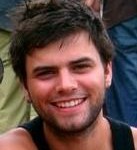By Josh Darrall-Jones
Who, why and what?

The study was completed using 11 healthy male participants with the aim to determine how supramaximal intermittent exercise disturbed Heart Rate Variability (HRV), and how long this would take to recover to baseline values.
Due to an increasing body of evidence to suggest that high intensity, and supramaximal interval training is capable of eliciting significant changes to maximal oxygen uptake (VO2MAX), while reducing the time necessary to train, the study was designed to discover how this training modality affected the autonomic nervous system (ANS) with an emphasis on a return to baseline; readiness to train again.
Participants completed a field based test, 30-15 intermittent Fitness Test (30-15IFT) which has been validated against measures of VO2MAX. Following the completion of the test, all participants were assigned the same relative exercise intensity for testing; 120% velocity at VO2MAX (120% vVO2MAX). The training intervention consisted of the participants running for 15 seconds at 95% of the final velocity of 30-15IFT (VIFT30-15), (120% vVO2MAX) followed by 15 seconds of active recovery at 45% VIFT30-15 to exhaustion. A ten minute rest period followed the protocol, with the same protocol implemented to exhaustion. Heart Rate Variability was measured pre exercise on two occasions; the night previous and ten minutes prior. Further measures were completed immediately, 12 and 36 hours post exercise using a Polar Heart Rate Monitor. Time domain (mRR, SDNN & RMSSD) and frequency domain (LnHF, LnLF, HFnu & LF/HF) measures were collected.
What did they find?
Following completion of the training protocol all measures of parasympathetic nervous system activity (mRR, SDNN, RMSSD, LnHF) had been perturbed and attenuated significantly while sympathovagal balance increased by nearly 200%, suggesting a high level of sympathetic activation; something which we should expect following intense exercise.
At 12 hours post exercise decreases in HFnu (0.61±0.05 vs. 0.52±0.04), and increases in sympathovagal balance (LF/HF; 85.5±22.7 vs. 106.8±17.2) were significant when compared to pre test measures.
Final measures at 36 hours post exercise showed an overcompensation towards an increase in parasympathetic activation with HFnu increasing 11% above pre testing (0.68±0.05), while the sympathovagal balance (LF/HF) reduced to below pre testing measures to 56.9±14.0.
Understanding the results and implications
The authors of the paper wanted to understand how implementing intense exercise, similar to that used in team conditioning to improve aerobic and anaerobic qualities, affected nervous system function post exercise in terms of a return to baseline suggesting a readiness to train.
The results of the paper suggest that following supramaximal intermittent training at an intensity of 120%vVO2MAX that the ANS remains disturbed at 12 hours post exercise but is fully recovered within 36 hours. This was reflected in the withdrawal of parasympathetic activity and increases in sympathetic activity at 12 hours post exercise. For the reader, this suggests that you should not train, as this is likely to further increase sympathetic activity of the ANS and lead to accumulated fatigue.
The measures at 36 hours post exercise all showed overcompensation in HRV indices toward a parasympathetic dominance and suggested that the participants had recovered beyond pre testing measures, which may suggest an acute adaptation to the training protocol. This would therefore mean that the participant was ready to train again.
The implications of these findings suggest that HRV measures should be longitudinally tracked to understand how training load affects the ANS post training, and again prior to further exercise. This is especially important in professional team sports where there may be multiple training sessions per day with a high training load throughout the week. In this case it may be plausible to measure HRV prior to each training session in a day and building up a database of individual athletes response to different stimuli; field based conditioning, resistance training, recovery, so that the Strength & Conditioning coach and team coach can understand when to reduce or increase training load, depending on each individual’s readiness to train which is reflected in their HRV score.
Alongside tracking, it may be plausible to correlate HRV with injury, subjective ratings of fatigue, quality of sleep, muscle soreness; objective measures of metres ran during games and training, as well as total weight lifted per day, week, or month in the gym. This approach takes into account many more variables and will further assist the coaching staff optimise training individually.
Layman lowdown
If you are completing, or programming high intensity intermittent exercise for an individual or team, you must be aware that they will accumulate high levels of fatigue, which may last beyond 12 hours after exercise. This will show with a decrease in HRV, although the individual may feel ready to train again. To optimise the response to training intensely, plan to leave between 36 & 48 hours between sessions, or until your HRV has risen again to a level close to baseline or beyond. This way you know that you have recovered and can manage when you train hard or take a recovery/ regeneration day; thus optimising your training time and the adaptations that result from training.
To read the HRV Research paper
A little info on the reviewer
The reviewer of the above article is called Josh Darrall-Jones, a MSc Exercise Physiology graduate and Strength & Conditioning coach with Leeds Carnegie RFU Academy, Leeds Metropolitan University Rugby League and Women’s Rugby Union, as well as lead S&C coach for the MCCU Leeds Bradford Cricket Team who play professionally on the County circuit.
He is based in Leeds and can be contacted via email, jddj_18@hotmail.com or twitter, @J_Darrall_Jones for one to one Strength & Conditioning coaching or group training.
He researched HRV for his MSc thesis and titled the study “Acute effects of high intensity intermittent running training protocols upon heart rate variability (HRV)” and can be consulted on methodologies for BSc and MSc studies, as well as for club coaches needing to understand how, when and why they should be using HRV to optimise training.
